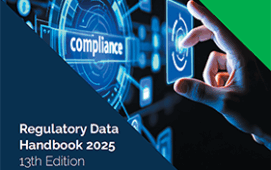
With a little over two weeks remaining before Canada’s derivatives trade reporting rewrite comes into force on 25 July, market participants are finalising the broadest data governance uplift the domestic OTC market has ever seen.
The year old amendments to Multilateral Instrument 96101 set a single compliance date for every province and territory and align key data concepts with global rewrites. The rewrite expands critical data elements, introduces daily collateral records and tightens error notification rules, mirroring CFTC and recent EMIR refits.The update comes with a 279page CSA Derivatives Data Technical Manual replaces four separate provincial guides and now forms the reference for message validations. Of the 148 creation, lifecycle, valuation and collateral fields, 114 are the CPMIIOSCO Critical Data Elements (CDE) already used in the United States and Europe, while five attributes; province of individual, jurisdiction flags for counterparties, an inter affiliate indicator and a platform anonymous flag remain unique to Canada.
The manual also embeds a waterfall for Unique Transaction Identifier (UTI) generation and mandates Unique Product Identifier (UPI) lookup before submission, bringing capture standards level with the CFTC’s 2022 specification. In summary, the rewrite brings the following impacts:
- Governance responsibilities climb sharply with every reporting counterparty now obligated to reconcile its books against repository data and to file the CSA notice of significant error or omission whenever an inaccuracy is found.(osc.ca)
- The new rule demands 148 reportable data elements, of which 114 are taken verbatim (or with minor naming tweaks) from the CPMI IOSCO CDE taxonomy.
- Tighter identifier standards with the rule incorporating ISO 23897, giving the Unique Transaction Identifier a fixed length of up to 52 characters.(securities-administrators.ca)
- Operational timelines change as dealers remain on a T+1 cycle while nondealers move to T+2 for creation and lifecycle submissions.
- A rigid set of conditional validations governs every submission, raising the prospect of immediate rejection if dependent fields are missing or inconsistent.
Drawing on DTCC’s deep experience from the CFTC rewrite and the EMIR refit, Michele Hillery, Head of Repository & Derivatives Services (RDS) at DTCC shares three lessons learned for Canadian counterparties to consider as they finalize preparations for cutover.
“First, while the CSA rewrite incorporates several common data elements (CDE) previously implemented in other global refits and rewrites, it also includes data elements and specifications unique to the Canadian trade reporting landscape. As such, it is essential that firms complete thorough testing of their systems and processes to ensure they are ready on the go-live date.
Secondly, under the CSA rewrite firms will be required to reconcile their books and records against reported trades. In advance of go-live it is critical for firms to evaluate their current reconciliation processes by leveraging their trade repository reports, with particular focus on data accuracy across systems and the proper linkage of reported lifecycle events, to determine if changes are required.Finally, as firms will have enhanced error and omission requirements under the CSA’s rewrite requirements, special focus should be paid to proactively developing these capabilities.”
During these final weeks, Hillery cautions that “Continued collaboration across the industry, trade repositories and regulatory bodies is essential to achieving readiness. Market participants should be in final preparations and completing full end-to-end testing with trade repositories now to validate that the new data requirements are addressed in their systems, ensure secure connectivity, and confirm staff are prepared,” she says and reminds firms that “DTCC’s Global Trade Repository (GTR) service, through its locally designated/recognized trade repository, DTCC Data Repository (U.S.) LLC (DDR), continues to offer its simulator tool and end-to-end testing environment to assist firms in assessing their readiness. DTCC urges clients to complete User Acceptance Testing (UAT) for the new Common Data Elements (CDE) fields, validation changes and reporting updates to be ready for the Canadian Rewrite regulatory changes ahead of the deadline.”
Industry testing began in March when DDR’s simulator accepted the first Canadian schema messages. The inaugural certification window followed in April, covering trade capture, UTI generation, UPI lookup, valuation and collateral submissions, and reconciliation of repository output back to internal books. By early May most large dealers had completed at least one full cycle and published defect trackers to vendors.
With those milestones behind them, firms now have a three week stabilisation period before the mandatory switchover when legacy layouts will be decommissioned and only the technical manual schema will be accepted.
Canada’s rewrite completes a trilogy of global reforms that use the same CDE, and identifier hierarchy defined by CPMIIOSCO. Together with the CFTC’s 2022 rules and Europe’s 2024 EMIR refit, the CSA amendments mean that all daily swap reports across the three jurisdictions will carry a common structure, enabling regulators to compare exposures directly and trace systemic risk markers in near real time. The convergence marks the first moment of true cross border data uniformity in the OTC derivatives market.
Subscribe to our newsletter




